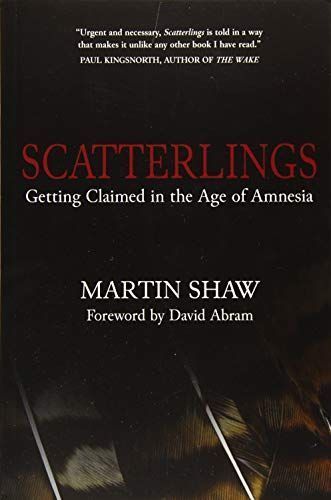
Scatterlings Getting Claimed in the Age of Amnesia
In "Scatterlings" Martin Shaw walks the myth-lines of seven stories based in and around his homeland of Dartmoor, England. Rather than the commentaries on such tales being primarily balanced against other literary sources, Shaw uses what actually occurs on these walks as the main source of information on the tales. The swoop of raven, the swamp, the thinking that moves through him, all form a knot of relationship between the land and the story. As he walks he tells the story of the place back to itself. This is a highly unusual move for a mythologist, an aspiration to use speech as form of animistic relationship, of binding, of praise to a place. In a time of rapid migrations and climatic movement, Shaw asks: how could we be not just from a place but of a place? When did we trade shelter for comfort? what was the cost of that trade? What are the stories the west tells itself in private? "Scatterlings" also takes us on a wonder through the wild edges of British culture, a story of secret histories: from the ancient storytelling of the bardic schools to medieval dream poetry, from the cunning man to animal call words, to Arabian and steppe Iranian influence on English dialect. Through its astonishing journey, Shaw reveals to us that when you gaze deep enough into the local you find the nomad, and when you look deep enough into the nomad you find the local. "Scatterlings" is a rebel keen, a rising up, to bend your head to the stories and place that claim you.